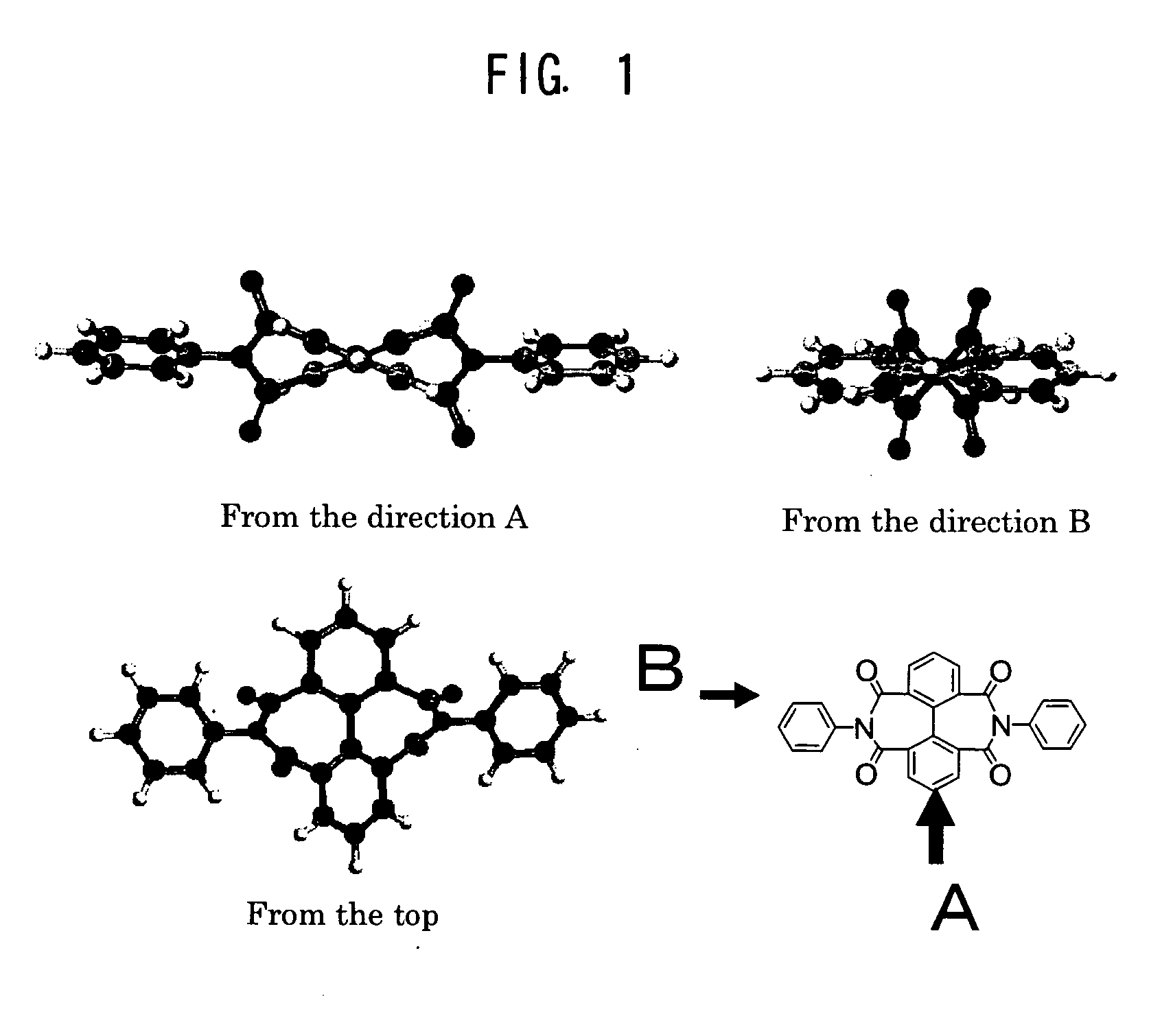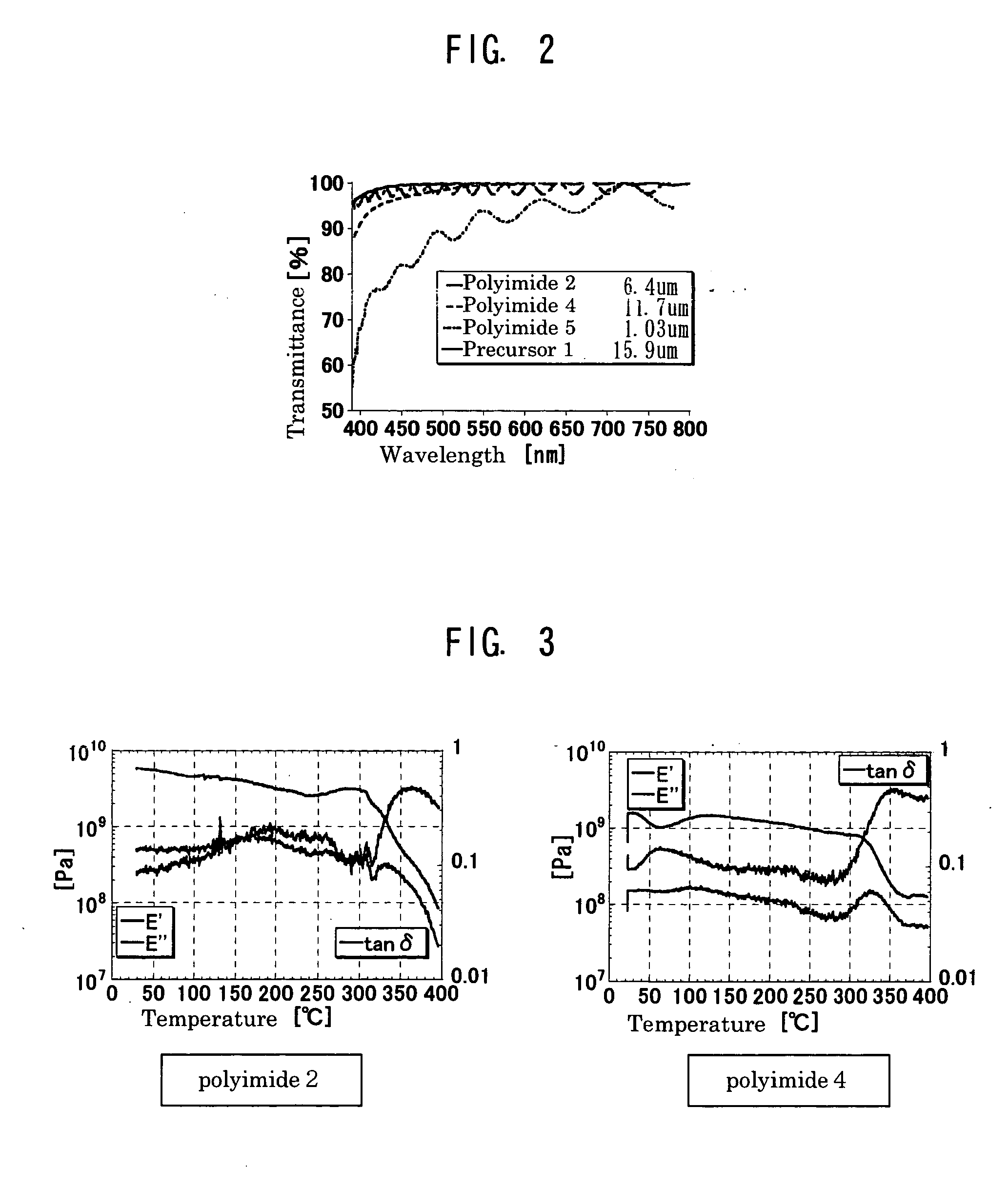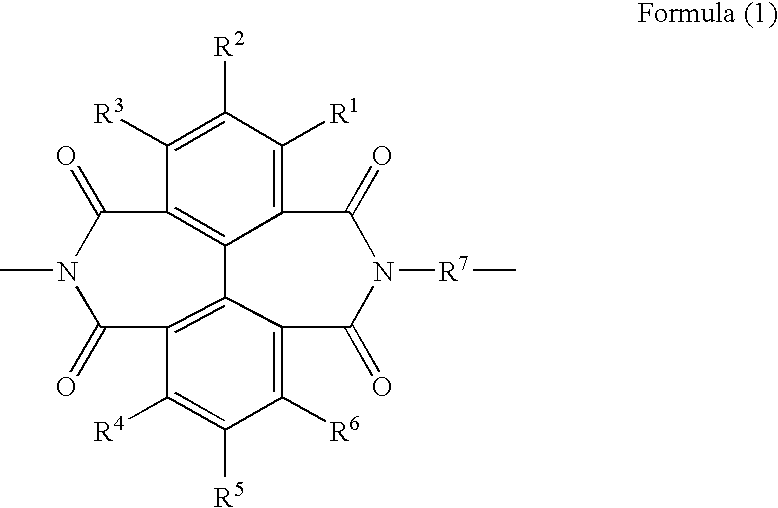Polymer compound, highly transparent polyimide, resin composition and article
- Summary
- Abstract
- Description
- Claims
- Application Information
AI Technical Summary
Benefits of technology
Problems solved by technology
Method used
Image
Examples
example 1
[0164] A 200 ml eggplant-shape flask was charged with 1.64 g (2 mmol) of the diimide compound 1 and 20 ml of toluene, and agitated. Thereto, 50 ml of thionyl chloride was added, and then agitated at 120° C. for 5 hours. After reaction, the solvent and thionyl chloride were removed by a rotary evaporator, thereby acid chloride was obtained. Thereto, 20 ml of dichloromethane which was preliminarily dehydrated was added and the acid chloride was dissolved, then the solution was dropped to a tetrahydrofuran solution in which 0.45 g (2 mmol) of 4,4′-isopropylidenediphenol and 0.30 g (3 mmol) of triethylamine were dissolved and dehydrated followed by agitation at 50° C. for 4 hours. After the solution containing a precipitate was re-precipitated using distilled water, the solution was dissolved in DMF. Then, the solution was re-precipitated using hexane, thereby a desired polyimide was obtained as a white powder (polyimide 1).
example 2
(1) Synthesis of a Precursor Solution 1
[0165] A 50 ml three-neck flask was charged with 1.20 g (6mmol) of 4,4′-diaminodiphenyl ether and the 4,4′-diaminodiphenyl ether was dissolved by 5 ml of N-methyl-2-pyrrolidone dehydrated (NMP), then agitated under nitrogen flow while cooling the flask in an ice bath. Thereto, 1.77 g (6 mmol) of 2,2′,6,6′-BPDA divided into 10 equal parts was added little by little every 30 minutes. After addition, the solution was agitated in an ice bath for 5 hours. Thereby, a viscous liquid (a precursor solution 1) having a transparency was obtained.
(2) Synthesis of Polyimide 2
[0166] A 50 ml eggplant-shape flask was charged with 1 g of the precursor solution 1 and 4 ml of NMP dehydrated and agitated. Thereto, 2 ml of acetic anhydride was added and agitated at 100° C. for 24 hours. The solution was re-precipitated using diethyl ether, thereby 370 mg of a white powder was obtained (polyimide 2). The weight average molecular weight with polystyrene standard...
example 3
[0167] A 50 ml eggplant-shape flask was charged with 1 g of a precursor solution 1 synthesized in Example 2 and 4 ml of NMP dehydrated, and agitated. Thereto, 2ml of trifluoroacetic anhydride was added and agitated at 100° C. for 24 hours. The solution was re-precipitated using diethyl ether, thereby 370 mg of a white powder (polyimide 3) was obtained. The weight average molecular weight with polystyrene standard using GPC was 13,000.
PUM
| Property | Measurement | Unit |
|---|---|---|
| Fraction | aaaaa | aaaaa |
| Fraction | aaaaa | aaaaa |
| Fraction | aaaaa | aaaaa |
Abstract
Description
Claims
Application Information
 Login to View More
Login to View More - R&D
- Intellectual Property
- Life Sciences
- Materials
- Tech Scout
- Unparalleled Data Quality
- Higher Quality Content
- 60% Fewer Hallucinations
Browse by: Latest US Patents, China's latest patents, Technical Efficacy Thesaurus, Application Domain, Technology Topic, Popular Technical Reports.
© 2025 PatSnap. All rights reserved.Legal|Privacy policy|Modern Slavery Act Transparency Statement|Sitemap|About US| Contact US: help@patsnap.com



